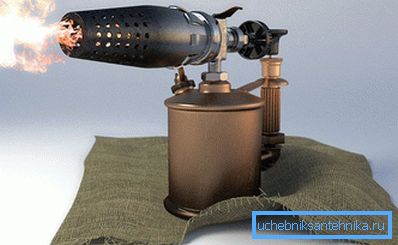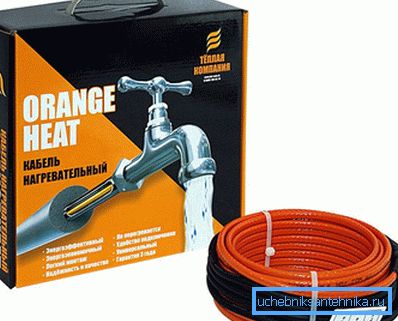How to defrost a sewer pipe
If the sewer system is not properly designed, problems often arise during the cold season. This is due to the low depth of communications in the ground, as a result of which, when the ground freezes, the sewage in the pipes also freezes. Such a situation may also arise in case of improper installation of thermal insulation. Therefore, in order to avoid accidents during the winter period, preventive work should be carried out in time. But if this was not done on time, then now you should not hurry, but you should perform all actions sensibly, since you need to defrost the sewer pipe in an appropriate and proper way.
How to localize a frozen place in the pipe

Since plastic and cast iron pipes can be used in sewer pipelines, they also have different heating methods. This is mainly due to the difference in the properties of materials. So, one day they were severely frost and sewage stopped going down the pipe, or worse, went in the opposite direction. First of all, do not despair, but you should understand the reasons for what happened and determine the source of the problems. The simplest thing that could happen was the clogging of pipes, which would require cleaning. If this is really an icy traffic jam, you will have to localize it.
To do this, take a long and hard wire, insert it inside the pipe and walk to the frozen area.
Tip! At the same time in plastic pipes it is important not to damage the internal surface and sealing joints.
If cast iron pipes, then almost any wire will do. Search should be in unheated premises and places where there is access to the pipes, that is, through manholes. It is good if the pipe joints are made removable on flange connections and their disconnection will not cause problems. Otherwise, you will have to break the tightness of the connections and look for a cork using an experimental method.

If the freezing occurred near the exit of the pipes from the house, then they will not be easy to eliminate. It is much more difficult to do this work on street communications, as the soil is frozen and manually digging will be quite difficult. Therefore, it is advisable to hire an excavator.
Tip! For plastic pipes, this method is not suitable, as they can be easily damaged.
According to the sewage plan, pipe joints should be indicated, which will be a guideline for digging the pit. It is advisable to make a pit at a length of several meters from the joint to both sides in order to provide enough space for work. If during uncoupling the sewage poured out of the outlet pipe, then the cork is located farther from the entrance pipe - searches should be conducted between the house and the dug-out section. In the first case, it is desirable to take the wire and check the location of the ice. If it is close, then it is necessary to dig the necessary distance in the direction of the sewage drainage in order to allow heating. In the second - on the contrary, in the direction of the input part. Before the warm-up procedure, it is necessary to prepare containers for draining sewage.
Universal ways of heating pipes

All methods of heating are qualitatively divided into internal, used inside buildings, and external. The defrosting of sewage pipes is based on local heating of the arisen ice block.
Tip! If this is done by simply pouring boiling water into the pipe, it will only get worse as the temperature is lowered, the amount of water poured in will not be enough, and as a result, the cork will increase.
There are the following universal methods of heating sewer pipes:
- The use of the Esmarkh mug, which is a container with a flexible but quite rigid tube soldered from below. When using a flexible plastic tube, you will also need a wire, to which it is fixed for better passage through the pipe. This method is used with a small distance from the joint and a small thickness of the tube. The hose is inserted into the pipe until it hits the ice, and then boiling water is poured inside the mug. In case the water goes back from the pipe, you need to substitute a bucket and keep a few more in reserve. It is advisable to wrap the heated area with a temporary insulating material so that the minimum amount of heat is dissipated.
- Having warmed pipes with boiling water. It consists in pouring boiling water over the localized area until the stopper melts. It does not need any additional tools and accessories. However, the applicability of this method is limited, since it will take a considerable amount of time to warm up in the cold. In multi-storey buildings, where the sewage system is laid in a vertical direction, or in the walls, this method is also unlikely to be useful.

- External heating with a construction dryer. It consists in the implementation of uniform heating of the pipe in the place where ice is supposed to be located. For plastic pipes, hair dryers with a temperature regulator should be used, as the temperature above 100 ° C can melt them. For cast iron pipes, the temperature can be set higher, but you should not heat the pipe, as this may adversely affect the seals. The hairdryer is kept at a distance of several centimeters from the pipe and allows it to warm up evenly left and right along the pipe. This method is applicable both indoors and outdoors, when the traffic jam does not exceed a length of 5 m.
- Use of U-shaped TENA. The heating element is fixed inside the metal shell so that the heating is directed. A piece of wooden plank is placed below it to prevent contact with the walls, especially plastic pipes. It is desirable to choose the heater in size is much smaller than the internal diameter of the hole of the pipe. It is imperative to provide high-quality insulation of electrical wiring to prevent short circuits and breakdown. The heater does not turn on immediately, but at the moment when it reaches the ice. During operation, it is switched on alternately to allow the water to flow out and to control the rate of advancement. This method is applicable when the cork is located on a straight pipe section, or there is no access to it from the outside. In places of bending to control the process will be almost unreal.

All of the above methods are effective in varying degrees and for use in a particular situation they can be combined within reasonable limits. Therefore, before you defrost the pipes, you should carefully consider the appropriate methods.
Methods for heating metal pipes
Methods for defrosting metal pipes are more efficient because they are based on various material properties, such as electrical conductivity, heat resistance, and strength. The most radical way to melt ice is to use a conventional blowtorch or torch.
Tip! You need to heat the pipe evenly so that it does not burst. The application of the method is focused on external use in open areas of the pipe and is effective in any frost. The method is quite mobile and does not require the presence of electricity nearby.

The second method of heating is the use of a heating tape, which is put on the pipe from the outside, and is covered with insulating material from above. When current is passed through it, it heats up, and LATR controls resistance and, accordingly, temperature values. But for its application you will need to use stand-alone generators, or pull the cable from the nearest outlet.

The third method is also based on electric heating, but already due to the passage of current through the pipe section. The terminals are attached to the ends and an electric current is passed, the pipe in turn heats up, and the ice melts. This device is designed for industrial use, so for infrequent use it is not worth buying. In addition, it requires sufficient experience.
Defrosting pipes is a rather laborious process, since it takes time to localize the resulting plug and select the appropriate method and tool.